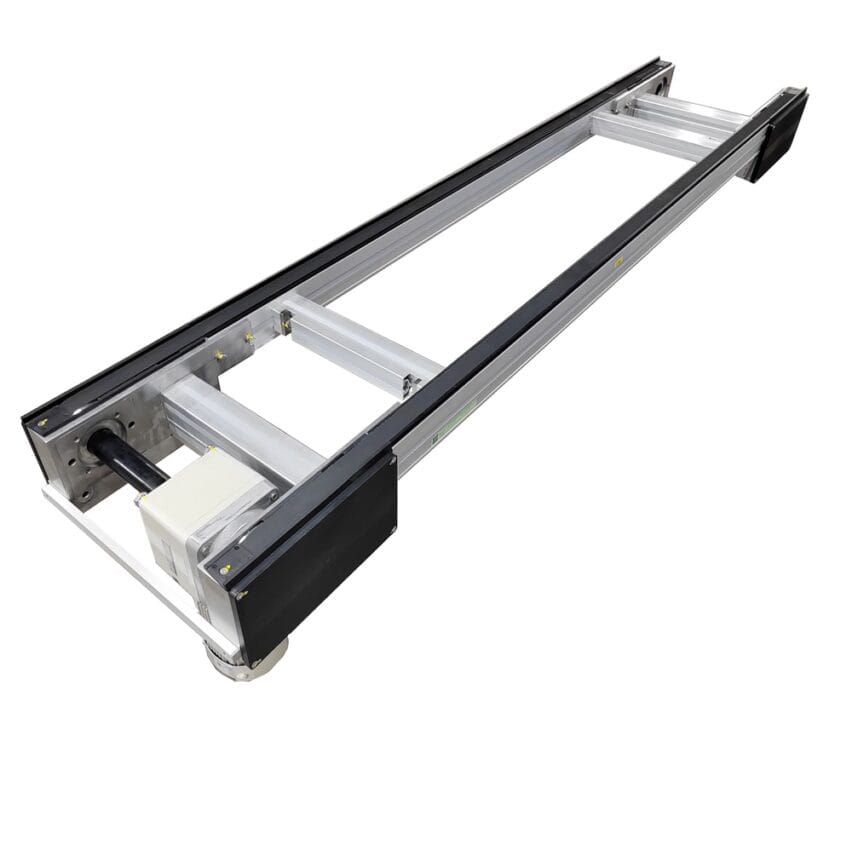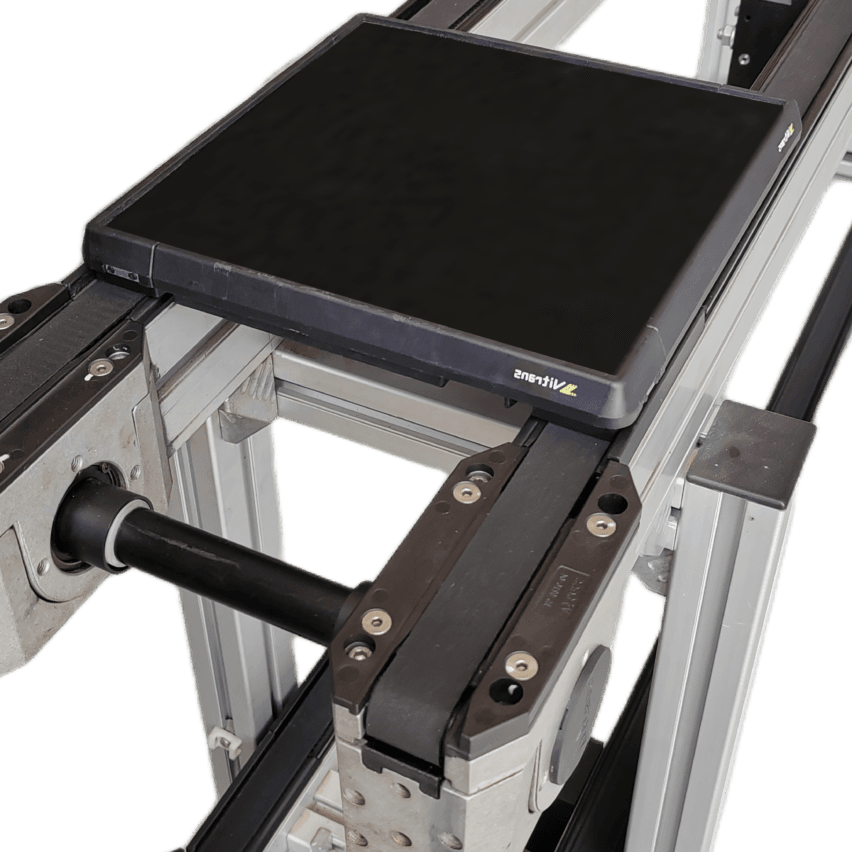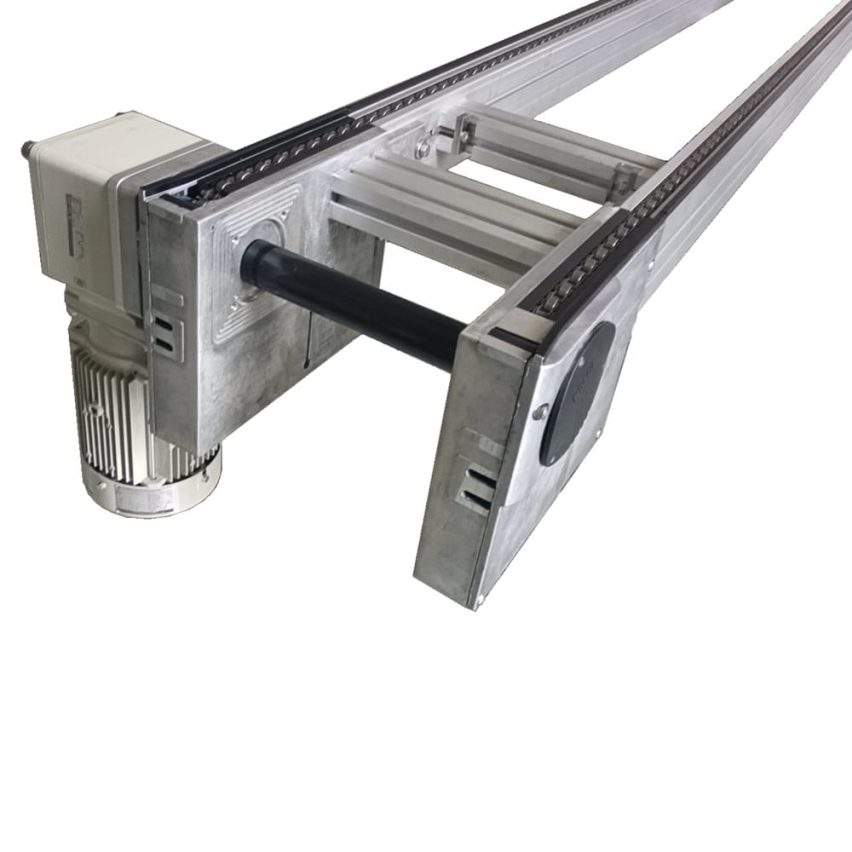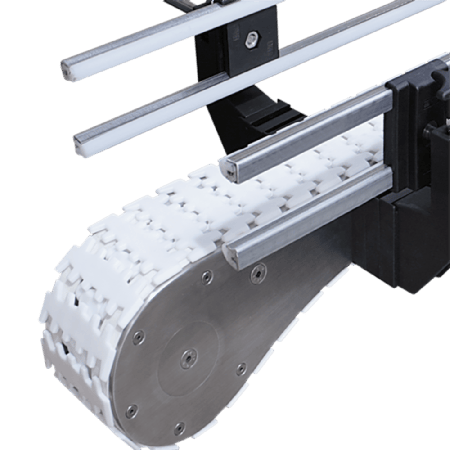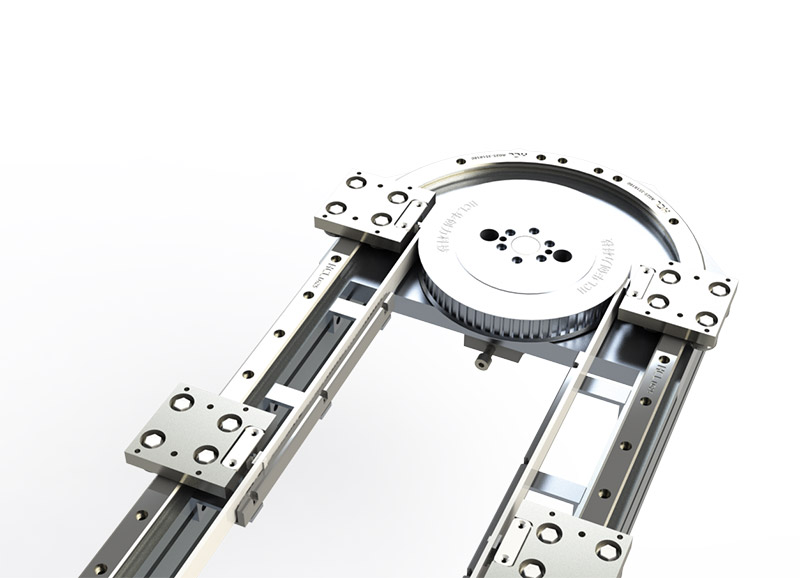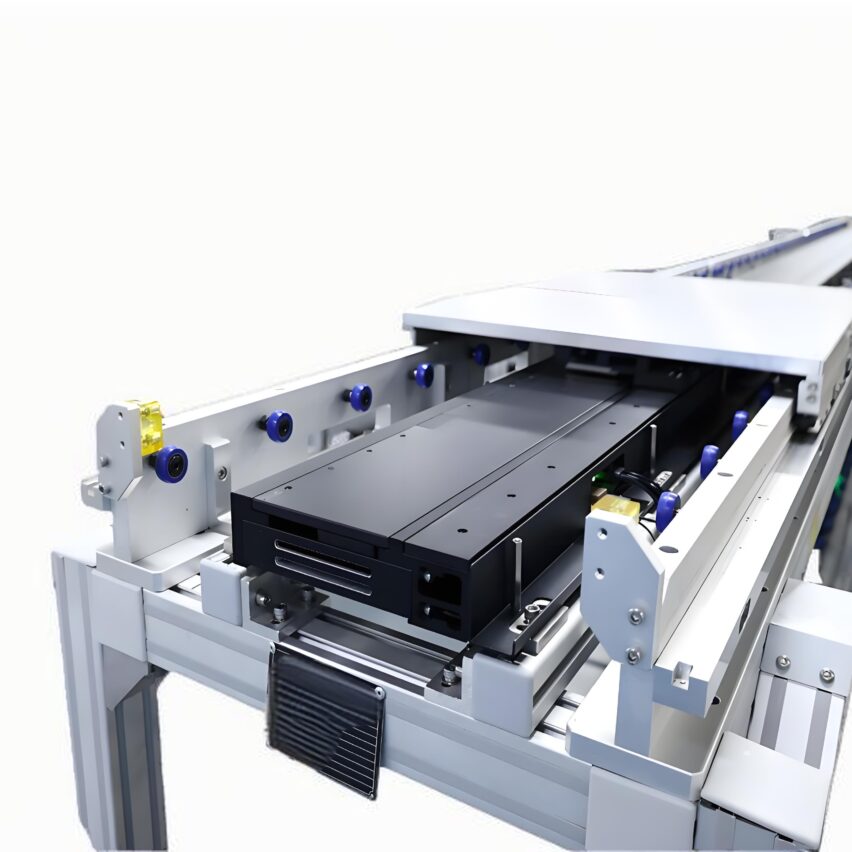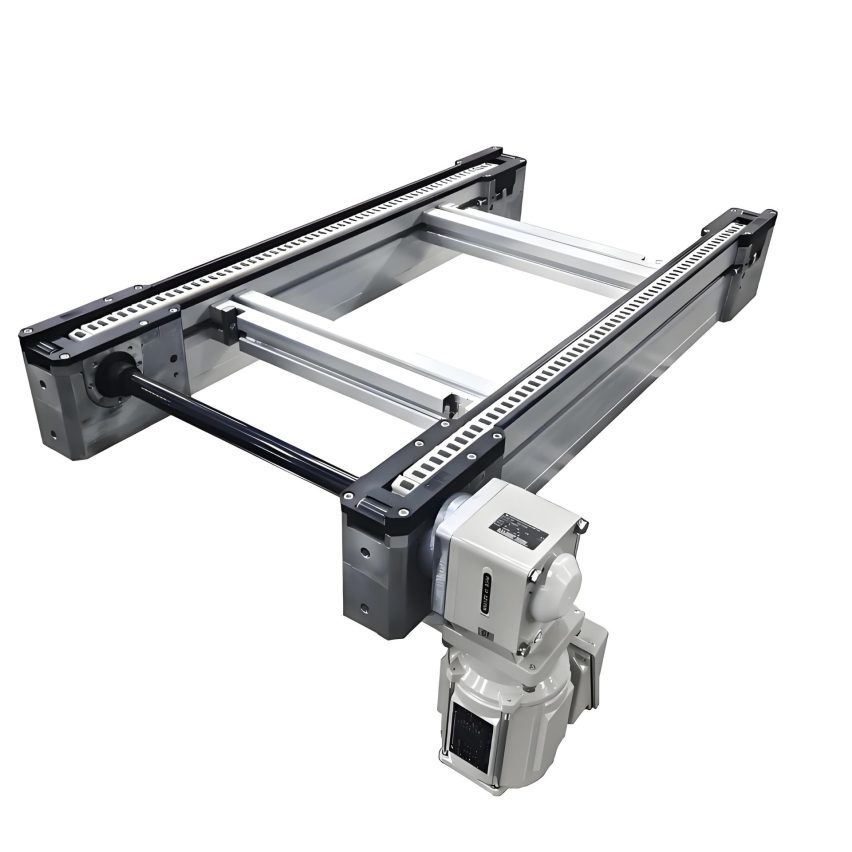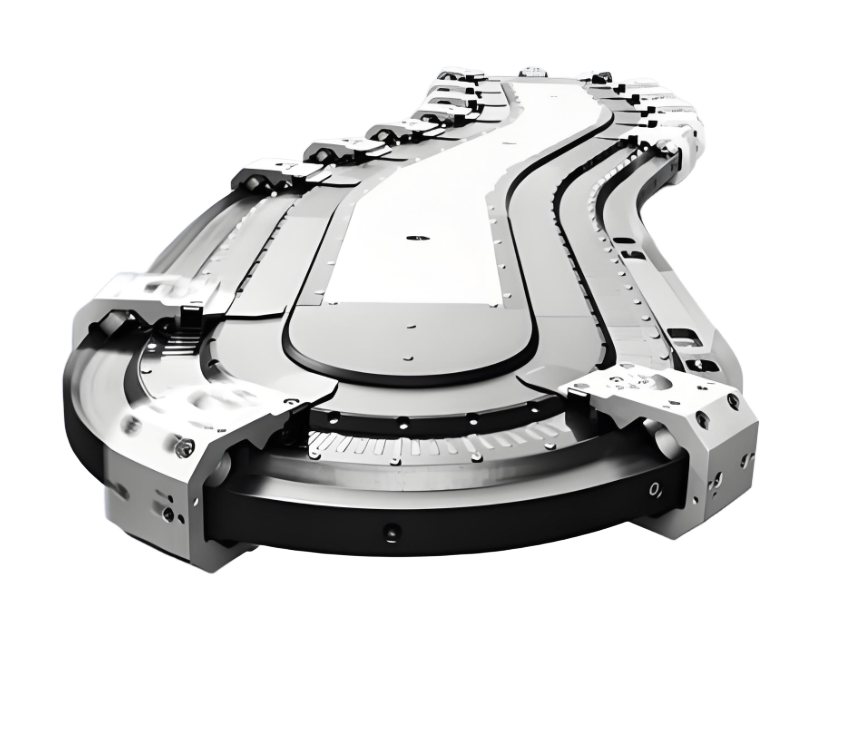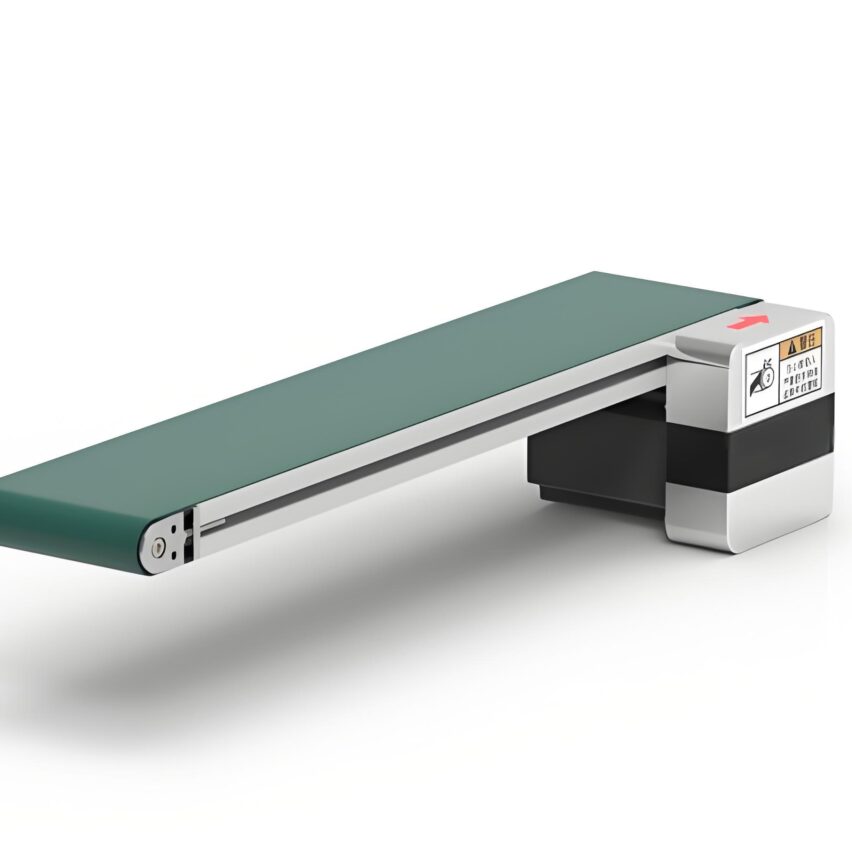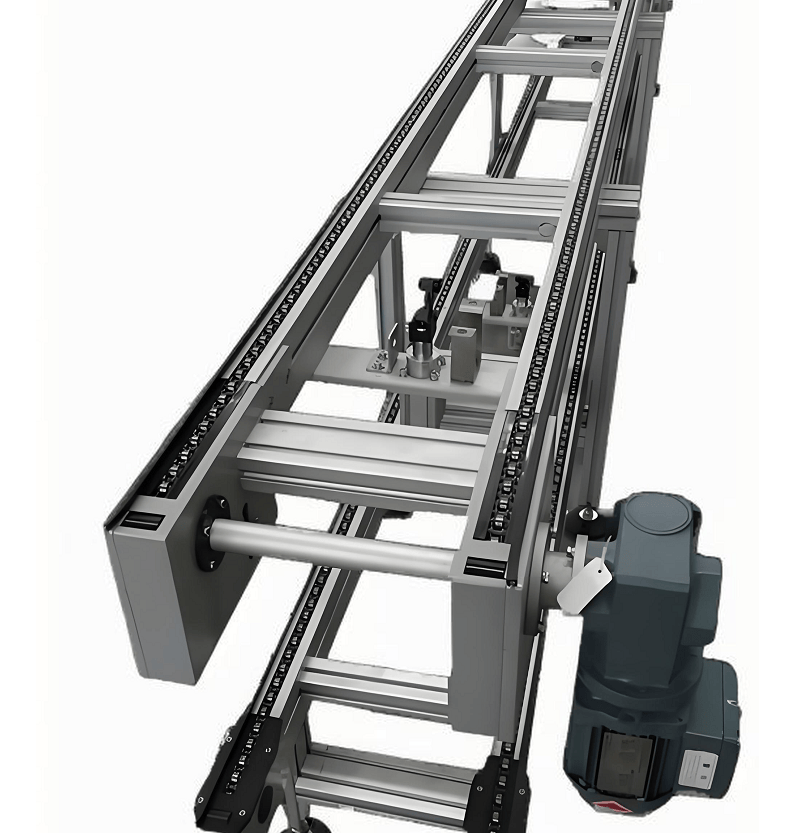In the wave of industrial automation, the double-deck speed chain rotary conveyor line is quietly reconstructing the logic of the production space - it is no longer just a material mover, but through theSpace Folding and Velocity SuperpositionThe dual innovation that has become the arterial system of the modern smart factory. This unique design allows the production line to realise in a limited space theCapacity Doubling and Process Cycling, becoming an efficiency accelerator in electronics manufacturing, automotive assembly, and more.
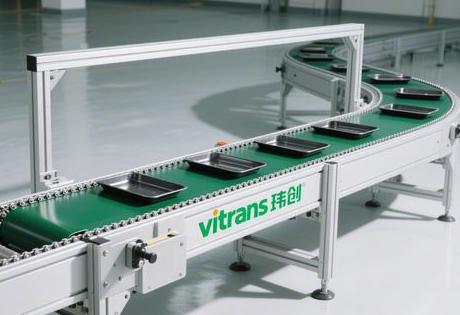
I. Structural analysis: the subtle synergy of the double layer
Dual working layer + return layerThe architecture is the core innovation. The upper layer carries the tooling plates to perform assembly tasks, while the lower layer is dedicated to theAutomated reflow of empty load boards.. The transfer machine acts as a vertical hub, connecting the two levels of track through lifting and lowering movements to form a closed loop system.
The secret of the "acceleration" of the speed chain is thatRoller-roller compound motion. When the chain is driven, the roller rolls forward along the guideway and simultaneously drives the upper roller to rotate itself. The work plate simultaneously acquires the chain displacement velocity (v0) and the linear velocity of the roller rotation (v1), and the final speed reaches the chain speed of the2-3 times(Theoretical calculation v= v0(1+D/d), D is the roller diameter, d is the roller diameter).
Stability is guaranteed by the high-precision fit of key components:
- Alloy Steel ChainWear-resistant and tensile, with single chain loads of up to several hundred kilograms.
- Profile guide rails: Customised cross-section shapes to reduce friction losses
- Pneumatic stopper: Precise control of workpiece dwell beats
- PLC central control system: Coordination of the synchronised operation of the transfer machine with the double chain
II. Efficiency leap: double compression of space and time
Flat Utilisation Enhancement 40%-60%The double-layer structure places the return system in the lower part of the line, freeing up floor space. Traditional single-layer production lines require additional return channels, while the double-layer structure places the return system in the lower part of the production line, directly releasing floor space. The case of electronic factory shows: under the same capacity, the length of production line is shortened by 35%, and the cost of site rental is reduced by 22%.
Parallel production-reflow operationsBreak through the efficiency ceiling:
plaintextmake a copy of| Tier | Function | Utilisation | Beat Control Method | |------|--------------|--------|-------------------| | Upper | Product Assembly | >95% | Blocker Set Stop | | Lower | Empty Plate Return | 100% | Continuous Operation |This dual-track synergy results in overall efficiencies of 1.8-2.2 times that of a single-tier line, especially in theMulti-process assembly scenarioThe advantages are significant.
III. Load and Stability: Reliable Support for Heavy Duty Scenarios
Unlike the flexible drive of a belt conveyor line, the speed multiplier chain'sarchitecture that combines strength and flexibilityBringing Unique Advantages:
- Full contact support for guide rails: Disperses pressure points to avoid single point overloads
- Roller-roller clearance fits: Reduced friction for light loads, switching to rigid transmission for heavy loads
- Triple Reinforced Chain: Automotive engine assembly line capable of carrying 500kg/station
The measured data of a home appliance enterprise shows that after 2000 hours of continuous operation, the chain elongation rate is <0.3%, which is far lower than the industry standard of 2% for ordinary conveyor chain. This kind of stability makes it able to handleHeavy workpieces with irregular shapesThe main purpose of this product is to provide a high level of quality, such as motor housings, machine tool bases, and so on.
IV. Flexible Adaptation: Modularity Reconstructs Industry Boundaries
Off-standard customisation is the norm, not the exception. applications above 70% require deep modifications based on the scenario:
plaintextmake a copy of- Electronic industry: lightweight design (load <50kg) + anti-static rollers - Automotive manufacturing: reinforced chain links + heavy duty shifter - Food processing: stainless steel + waterproof bearings - Pharmaceutical workshop: dust-free lubrication system + closed guide railsModular components for "plug and play" flexibility:
- Removable rack: Quickly adjust the length of the wire body
- Standardised interfaces: docking AGVs or robotic arms
- Adjustable floor height: to accommodate future process changes
V. The universality dilemma: the challenge of the lack of standardisation
Despite the significant advantages, the industry is still facingCompatibility bottlenecks::
- Sprocket pitch is not uniform: A manufacturer 8mm chain link can not match B factory 10mm sprocket
- Diversification of electrical interfaces: PLC signal protocols are not compatible with each other
- Confusing load grading: 30% difference in load capacity between the same specification labels.
The solution path lies inecological coordination::
"In the future, there is a need to establish something like a 'USB standard' in the field of conveyor equipment - led through industry associations:
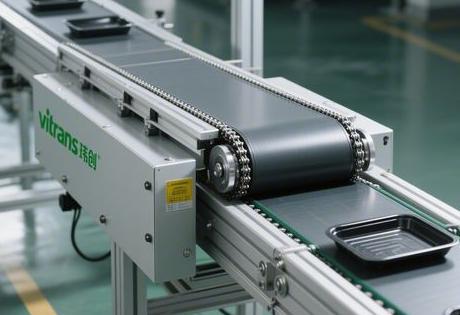
- Critical Component Interchange Specification
- Harmonised standards for load testing
- Open Framework for Communication Protocols"
--quoted from a white paper by an intelligent equipment research institute
VI. Smart Manufacturing Forward: Evolving from Automation to Cognition
A new generation of systems is breaking through physical boundaries as 5G + Industrial Internet infuses traditional conveyor lines:
- Digital twin pre-tuning: Modelling efficiency parameters of different layouts in virtual space
- Self-aware beat control: Dynamic adjustment of the multiplication ratio by load weight
- Predictive maintenance: Vibration sensors warn of link fatigue two weeks in advance
In the practice of a smart factory in Dongguan, access to the AI algorithm of the multiplier chain system to makeReduced changeover time 67%--The system automatically calculates the optimal blocker distribution and lift rhythm of the loader when the production line switches product models. This dynamic adaptability is redefining the meaning of "flexible manufacturing".
Conveyor lines are no longer mechanical tracks, but thinking production metronomes. When the double-layer structure collapses space vertically and the multiplier effect compresses the process in the time dimension, the efficiency philosophy of Industry 4.0 takes shape in this three-dimensional reconstruction.
Self-questioning: a look into the heart of technology
Q1:How does the "multiplication" of speed chains break through physical limitations?
A: AdoptionSuperposition of roller-roller movementsRealise the speed increase of workpiece plate. When the roller drives the chain forward as a whole, the friction transmission between the roller and the work plate generates additional speed, and the theoretical speed can be up to 3 times that of the chain, and the actual application is mostly about 2.5 times.Q2: Why does the automotive industry favour this type of conveyor line?
A: The key is in theHeavy Duty Compatibility and Beat Control::
- Heavy components such as engines require strong load-bearing structures
- Wide variation of dwell times at assembly stations, blockers for differentiated beats
- Lower empty tray return to avoid cross contamination
Q3: Does customisation hinder technology rollout?
A: On the contrary -Modular design turns customisation into an advantage::
- Standardisation of basic frameworks (link/guideway interface harmonisation)
- Functional components optional (heavy-duty/dustproof/corrosion-resistant modules)
- Digital twin platform pre-validation retrofit programme
This allows the same production line to serve both electronic light assembly and, after module changeover, photovoltaic module production.

